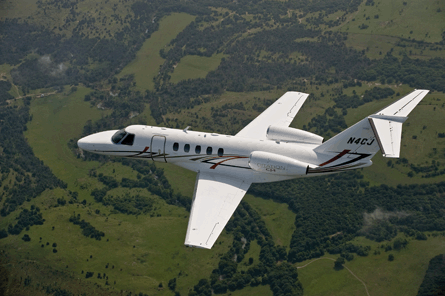It has been a bumpy ride for business aviation over the past 12 months. The global recession, which began in the second half of 2008, tightened its grip on the industry in the first half of 2009, spreading misery from operations to manufacturing.
Nevertheless, an air of cautious optimism returned to the industry late last year prompted by an increase in activity across the most of the sectors.
"The good news is that the leading market indicators are stabilising. The bad news is that these indicators are a long way down from their peak levels," says aviation analyst Richard Aboulafia. He says it will take a number of years for the industry to return the growth levels experienced in 2007 and 2008. "The best we can hope for is some modest return to economic prosperity in late 2010, which should mean the start of a values recovery in 2011 and the first signs of a deliveries recovery in 2012," he says.
Business aircraft orders were drastically hit in 2009 as individual and corporate wealth evaporated. The world's banks added to the despair by turning off the finance tap to would-be owners as repossessions of "toxic assets" escalated to record levels.
 |
|---|
© CessnaCessna's newest light-cabin offering, the CJ4, is set for certification in the second quarter |
By the latter half of 2009 around one-third of the world's business aircraft fleet was up for sale and prices of pre-owned types had plummeted to previously unheard of levels - particularly in the medium and light business jet categories, where the values of some models had dropped by 30% in 12 months.
Airframers reacted to the adverse market conditions by slashing their workforces and revising delivery schedules to match output to demand. Some were even forced to cancel new aircraft programmes. Cessna, for example, cancelled development of its widely acclaimed Columbus business jet in July as customers pulled orders for the large-cabin type.
Two months later Hawker Beechcraft said it would delay service entry of its Premier II light business jet by at least two years to late 2011, anticipating a market rebound around the same time. Perfect timing coupled with a strong market appetite were also the key reasons behind turboprop manufacturer Piaggio's decision last year to delay the launch of a new twin-engined business jet.
Other airframers, meanwhile, declared last year their intention to stick with original development schedules for their programmes.
Gulfstream ended the year with the successful first flights of its newest business jet family member - the midsize G250 and ultra-long-range G650 - and remains on track to certificate both aircraft in 2011. Embraer is continuing to develop the midsize 500 and superlight 450, which remain on schedule for service entry in 2012 and 2013 respectively.
BUSY IN BRAZIL
The Brazilian airframer had a busy 2009 with the first flight of the Legacy 650 - a large-cabin, longer-range version of the super-midsize Legacy 600 business jet - that is set for service entry in the second half of this year. The previous 12 months also bore witness to the certification of Embraer's Phenom 300 by the Brazilian and US certification authorities and first deliveries of its 190 airliner derivative, the Lineage 1000.
Meanwhile, Dassault delivered in November the first large-cabin, wingletted Falcon 2000LX and continues to work behind the scenes on its Future Falcon super-midsize jet, a replacement for the out-of-production Falcon 50EX at the bottom of the airframer's range.
Aboulafia says there is some optimism for potential business aircraft buyers as banks have begin to lift their moratorium on lending. However, he argues: "Stabilisation isn't recovery, and recovery isn't growth. While this market was very directly affected by the broader economy, it should recover with it."
He suggests, however, that there is also the risk of a double-dip recession this year, "a so-called dead cat bounce", says Aboulafia. "If stimulus spending packages don't work their magic, and if the developed world economy stays flat or dips again for another year, that could conceivably mean a fourth year of pain for the industry. But right now, we're forecasting a three-year ordeal, with deliveries in rough shape in 2009-11."
Although 2010 holds much uncertainty for the business aviation industry, it is also likely to see a number of key milestones for airframers. Dassault will be hoping to begin in the coming weeks certification testing of its Falcon 900LX - a wingletted version of the 900EX, which it replaces - leading to certification by the end of the year.
Embraer is set to begin deliveries of the Phenom 300 shortly, while Cessna's newest light-cabin offering, the CJ4, is earmarked for certification and service entry by the end of the second quarter. Hawker Beechcraft's latest King Air upgrades, the C90GTx and 350i, are also set to enter service in the first half of the year coinciding with US certification of the Diamond D-Jet personal jet after a protracted six-year development programme.
Meanwhile, start-up airframer Emivest plans to ramp up later this year production of its SJ30 light business jet, the first of which was delivered to actor Morgan Freeman in September 2009. It remains to be seen whether fellow start-up manufacturer Grob - developer of the SPn business jet - manages to secure in the coming 12 months the necessary investment and OEM partnership to relaunch development of the light-cabin aircraft.
Source: Flight International























